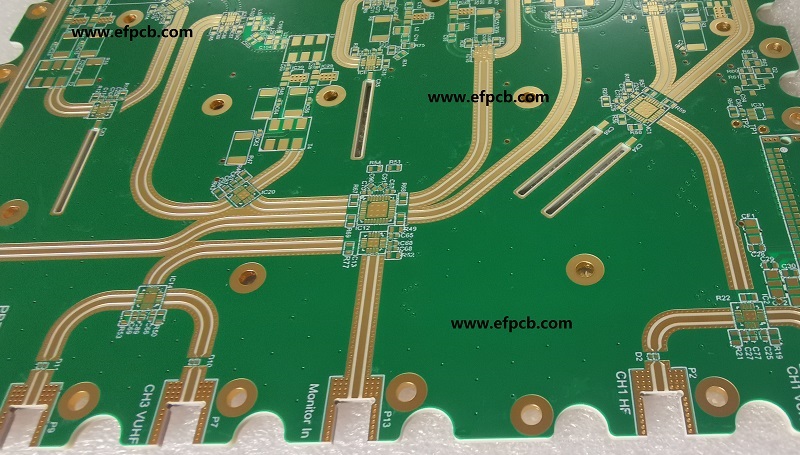RF PCBs: The Key to Reliable Wireless Communication

Keywords: RF PCB
In the world of electronics, radio frequency (RF) printed circuit boards (PCBs) play a vital role in the design and manufacture of devices that require wireless communication. An RF PCB is a circuit board specifically designed to transmit or receive radio frequency signals, and it must be carefully engineered to ensure optimal signal integrity and performance.
RF PCB is used in a wide variety of applications, including cell phones, Wi-Fi routers, GPS devices, wireless sensors, and more. They are used in products that require reliable communication in noisy and unpredictable environments, where signal quality can be impacted by interference from other devices, reflections, and other factors.
Design Considerations for RF PCBs
Designing an RF PCB requires careful consideration of a variety of factors, including signal frequency, impedance matching, and noise reduction. Here are some of the key design considerations for RF PCBs:
Signal frequency: RF PCBs operate at high frequencies, which can be in the range of several hundred megahertz to several gigahertz. This requires special care in the design of the PCB, as the behavior of the circuit can be significantly impacted by the frequency of the signal.
Impedance matching: The impedance of the transmission line is a critical factor in the performance of an RF PCB. The PCB must be designed to match the impedance of the transmission line to the source and load impedance to reduce signal reflection and minimize losses.
Noise reduction: RF PCB is highly sensitive to noise, and any interference can degrade signal quality. Proper grounding, shielding, and filtering must be implemented to reduce noise and ensure reliable signal transmission.
Material selection: The choice of PCB material can significantly impact the performance of the RF PCB. High-frequency laminates with low dielectric constant and loss tangent are preferred to reduce signal attenuation and distortion.
Conclusion
In conclusion, RF PCBs are a critical component in the design and manufacture of wireless communication devices. They must be carefully designed and manufactured to ensure optimal signal integrity and performance. With the right design considerations and manufacturing techniques, RF PCB can help ensure reliable and high-quality wireless communication in a wide range of applications.




